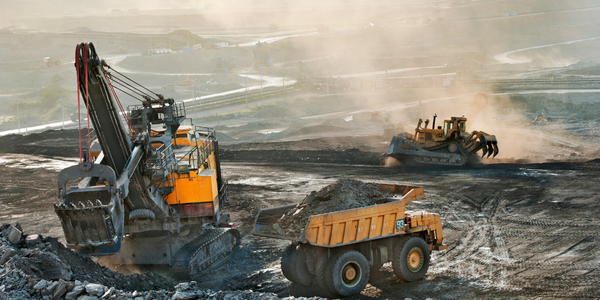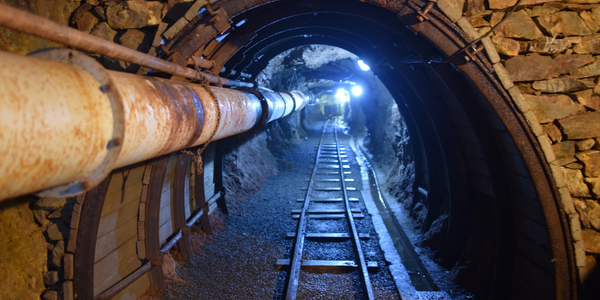ILCo delivers superior reporting with QlikView and saves millions through improved forecasting and decision-making

公司规模
Large Corporate
地区
- Pacific
国家
- Australia
产品
- QlikView
- SIBA PMF
技术栈
- Data Analytics
- Data Integration
实施规模
- Enterprise-wide Deployment
影响指标
- Cost Savings
- Productivity Improvements
技术
- 分析与建模 - 实时分析
适用行业
- 矿业
用例
- 供应链可见性(SCV)
- 预测性维护
服务
- 数据科学服务
- 系统集成
关于客户
ILCo is the independent operator of the Dalrymple Bay Coal Chain, a major coal supply chain made up of 14 mining companies, train line operators, logistics companies and government agencies in the northern Bowen Basin part of central Queensland, Australia. The industry is responsible for millions of tonnes through coal exports and the smallest process improvements can lead to millions of dollars in savings. To find those savings ILCo knew they needed to measure what was happening, share the information and then act on what they learned. However, during ILCo’s first two years of operation it became apparent that there was a lack of transparency and understanding in how the 14 participants, who all rely on each other, work together.
挑战
ILCo, the Integrated Logistics Company, operates the Dalrymple Bay Coal Chain, a major coal supply chain made up of 14 stakeholders, including mining companies, rail and terminal operators, rail network manager and government agencies in the northern Bowen Basin part of central Queensland, Australia. The industry is responsible for millions of tonnes through coal exports and the smallest process improvements can lead to millions of dollars in savings. However, during ILCo’s first two years of operation it became apparent that there was a lack of transparency and understanding in how the 14 participants, who all rely on each other, work together. Each of the companies was collecting its own data and measuring what they believed was important. However, this didn’t take into account was important to the other participants. For example, rail operators were reporting on train cancellations whereas punctuality was important to their supply chain partners. In order for the coal chain to work as efficiently as possible a new, holistic approach was needed – one where the information collected and shared could be used for mutual benefit and profit.
解决方案
ILCo engaged a consultant to define common performance indicators across the coal chain. They ended up with a list of 79 key performance indicators that were custodian and manager of the solution. Working with the solution designer, SIBA Solutions, who created the performance management framework, ICLo used QlikView as the analytics tool. ILCo implemented the SIBA PMF QlikView solution as a way of tracking the 79 performance measures. By having ILCo and the 14 participants look at a common data set it is now possible to work cooperatively and find ways to deliver improvement value right through the entire coal supply chain. The data is collected by each of the participants in their different systems and exported as comma delimited CSV files. This is then aggregated in the SIBA PMF QlikView application. While the data loading process could be considered low tech it enabled ILCo and the participants to accelerate the deployment of the PMF application so that the benefits could be realised as soon as possible.
运营影响
数量效益

Case Study missing?
Start adding your own!
Register with your work email and create a new case study profile for your business.
相关案例.

Case Study
Underground Mining Safety
The goal was to produce a safety system to monitor and support underground mining operations; existing systems were either too simple (i.e. phone line) or overly complex and expensive, inhibiting deployment, and providing little-to-no support in event of an accident. Given the dangerous nature of the mining work environment and the strict regulations placed on the industry, the solution would have to comply with Mine Safety and Health Administration (MSHA) regulations. Yet the product needed to allow for simple deployment to truly be a groundbreaking solution - increasing miner safety and changing daily operations for the better.

Case Study
Mining Firm Quadruples Production, with Internet of Everything
Dundee Precious Metal’s flagship mine, in Chelopech, Bulgaria, produces a gold, copper, and silver concentrate set a goal to increase production by 30%. Dundee wanted to increase production quality and output without increasing headcount and resources, improve miner safety, and minimize cost.

Case Study
Fastenal Builds the Future of Manufacturing with MachineMetrics
Fastenal's objective was to better understand their machine downtime, utilization, quality issues, and to embrace cutting-edge manufacturing technology/process improvement capabilities to bring their team to the next level. However, there was a lack of real-time data, visualization, and actionable insights made this transition impossible.

Case Study
Joy Mining Systems
Joy equipment faces many challenges. The first is machine integration and control. The business end of the machine has a rapidly-spinning cylinder with 6-inch diamond-studded cutting teeth. It chews through rock at rates measured in tens of tons per minute. The system grinds through the rock in front, creating a rectangular mine tunnel. Hydraulic lifters support the ceiling as the machine moves forward. Automated drills and screws drive 3-ft long screws into the ceiling to stabilize it. The rock and coal fall into a set of gathering "fingers" below the cutting cylinder. These fingers scoop up the rock and coal and deposit it onto a conveyor belt. The conveyor passes under the machine and out the back. A train of conveyor belt cars, up to a mile long, follows the cutter into the mine. The rock shoots along this train at over 400 feet per minute until it empties into rail cars at the end. Current systems place an operator cage next to the cutter. Choking dust (potentially explosive), the risk of collapse and the proximity of metal and rock mayhem make the operator cage a hazardous location.

Case Study
Improved Monitoring in Industrial Manufacturing Facility
When your crane is moving tons of magma-hot iron, you can’t afford an unexpected failure. McWane Ductile knew monitoring the crane motor metrics within their facility could help prevent a mechanical failure that would strand an enormous bucket of molten metal overhead. Unfortunately, their legacy wired monitoring system couldn’t work with moving objects in this extreme environment. If they could integrate wireless capabilities into their existing equipment they could extend their monitoring capabilities without starting over from scratch.



